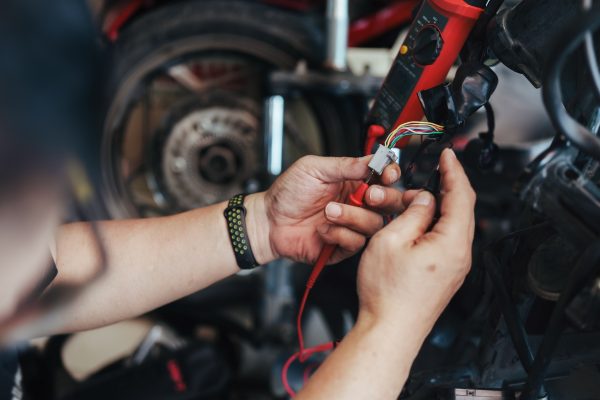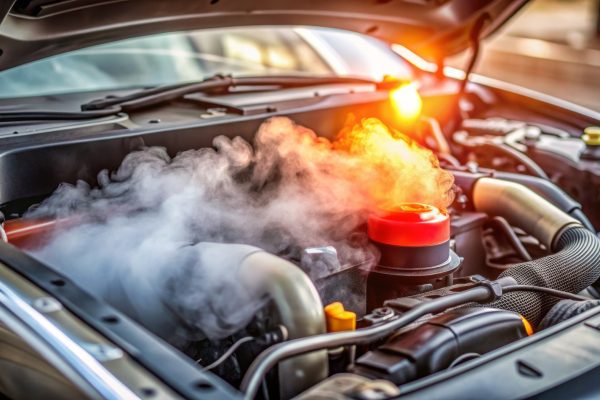On 29th April 1899, Camille Jenatzy, a Belgian of Hungarian extraction, set a new unofficial land speed record of a shade under 65.8mph, the first time a self-propelled road going vehicle had broken the 100kms per hour barrier. The significance being it was achieved with an electric car.
Looking rather akin to two bullets welded together to form a tube with pointed ends, the vehicle’s body sat on four small wooden artillery wheels shod with Michelin pneumatic tyres. The contraption was powered by two 25kW motors, each driving a rear wheel via a chain. The speed was maintained for three quarters of a mile before the car stopped. An observer of the time remarked: “This vehicle was of no use in any way as a guide to any other class of vehicle.” Jenatzy must have thought the same for he switched to gasoline/electric power, then to wholly petrol powered racing cars, winning the 1903 Gordon Bennett Trophy.
In 1900, Ferdinand Porsche, a German engineer, who was later to become regarded as one of the greatest designers of the automotive industry, created an electric car called the “Lohner-Porsche”. He was just 23 years old and with a limited education, yet Jacob Lohner gave Porsche considerable freedom to develop his machine, which had electric motors mounted inside the hubs of each front wheel. A later four-wheel drive version had motors attached to each wheel. Porsche coupled the batteries to a gasoline powered generator, making the car very heavy but capable of carrying heavy coachwork. This was all created to help explore a design for an electric omnibus. Amazingly, after exhibiting this car at the Paris Salon of 1900, Porsche was invited to meet E.W. Hart of Luton, Bedfordshire, who was keen to purchase these electric chassis for his new bus service. Hart also wished the vehicle to run on petrol as well as augmented electric power. The resultant design was a monster, weighing more than four tonnes and needing nearly two tonnes of batteries.
In 1919, Harrods ordered a fleet of American Walker electric delivery vans capable of around 19mph with a range of 60 miles. By 1935, Harrods had developed the facility to build their own electric vans, producing over the ensuing years more than 60, many of which were still in use into the 1970s.
The recent COP26 Conference in Glasgow has been rightly used as a platform to promote sustainable industry and green powered growth. This has placed an emphasis on the abolition of fossil fuels to power motor vehicles, homes, industry, aviation and shipping. As an unavoidable result, the electric car has made an irreversible comeback.
Remarkably, in over 100 years, very limited progress has been made in developing new, lighter, cheaper and more durable ways of storing electricity. A century ago, a battery was constructed of a rubber reinforced case containing lead plates and sulphuric acid. Today, a battery still has a case made of rubber or plastic, filled with plates of lead surrounded by: electrolyte, lithium ion or lithium polymer. In order to achieve range, power and capacity, a huge number of “cells” have to be packed together to make a “battery” so they occupy most of the floor of the car. (They are placed there of course for dynamic reasons – lowering the centre of gravity of the car leads to greater stability and thus safety. They are also out of the way when the car is in a collision). The disadvantage of this arrangement is still the problem of weight. A Tesla is heavy by comparison with a conventional petrol or diesel powered car, despite the elimination of the weight of a cast iron engine, gearbox, differential and fuel tank.
For manufacturers, dealers and the service sector, new pressures now arise. While electric cars will still require servicing, such work is more likely to centre on brakes, tyres, suspension and peripherals. Gone will be the replacement clutch, gearbox, head gasket, oil and filter and many more staples of the current industry. An electric car service is more likely to involve a link up to a laptop and the installation of an “update” rather than an engine overhaul. Because of these new demands, garage owners have no option but to optimise both workforce and investment in new technology and training.
As a concomitant of this new thinking in motive power design, many features of the electric car are now built in, making certain functions automatic. It is now possible to speak to your electric car remotely by mobile telephone and it can be programmed to take you to your destination by voice command. As this technology improves, more functions will be handled by the car and fewer by the “driver”, who might eventually become just another passenger.
It is this aspect that has about it the whiff of danger, for the time will come where a malfunctioning car will drive into disaster, taking its passengers with it. Who in such circumstances, will be to blame, if the car was acting according to an automatic pre-programmed set of instructions? The law has yet to be tested in this area but it will be!
We are witnessing the dawn of a new age of transport – we are going back to the future!

Our dealers use us to help them be more Efficient and Profitable!
You can use our Dealer and Lead Management software to integrate all dealership departments, both online and physical ; providing all in-house functions; Invoicing, Stock Management, Accounting and Marketing as well as interfacing for advertising, ecommerce and more.








